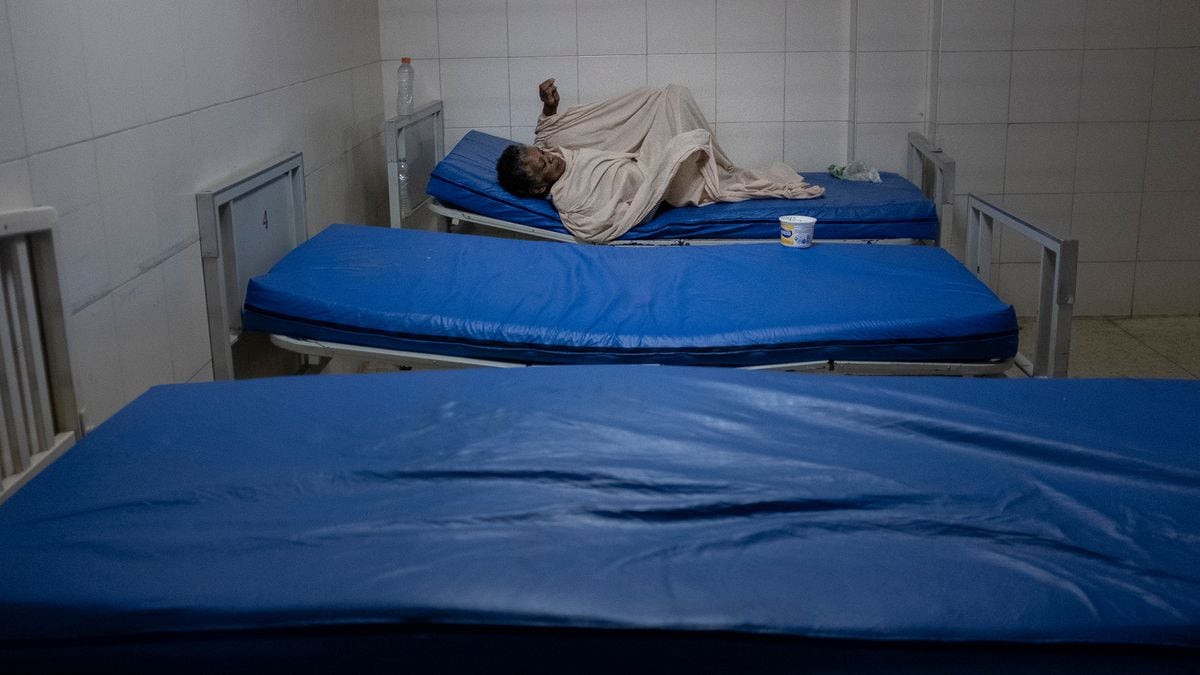By Kalhan Rosenblatt -
NBC News
Reports of persistent sadness and hopelessness.
Decreased mental health.
Increased suicidal thoughts.
None of these trends, described last week in an alarming report from the Centers for Disease Control and Prevention (CDC) on adolescent mental health, has surprised Jacqueline Metzger, a college student. 17 year old in his senior year of high school in Washington DC
“I wasn't surprised at all,” Metzger said.
"We've been -- I wouldn't say obviously sadder -- but I think there's been more room to address that sadness," he said.
[Sexual assaults on adolescent girls at school, online and at home increased during the pandemic]
The report, released Feb. 13, is the result of CDC's 2021 Youth Risk Behavior Survey, a biennial effort to collect data on high school students' health-related behaviors and experiences.
The results, based on responses from more than 17,000 students, revealed that well-being is especially poor among adolescent girls, 57% of whom reported feeling "persistently sad or hopeless," the highest percentage in 10 years.
Much of the guesswork about why girls experience increased sadness comes from adults, whose theories include cell phones and social media, as well as anxiety about the world that teenagers will inherit, plagued with problems like the climate emergency. .
[More Eye Products Recalled Due to Potential Bacterial Contamination]
Metzger and eight other teens interviewed in six states agreed with those hypotheses, but said their generation has the confidence to talk about how they feel and why they think that is the case, if adults are willing to listen to their voices.
“Some adults are really open to these kinds of conversations, but most adults make you feel like you're just another teenager complaining about petty issues when 'there are bigger things to worry about,'” Marwa said via text message. Sahak, a 16-year-old girl who lives near the central coast of California.
“It's just frustrating how we're hardly ever taken seriously when it comes to issues we care about,” she explained.
High school students pointed to what they see as unique stressors facing their generation, which combined have led to the observed rise in depression.
Many cited social media, the coronavirus pandemic - which robbed them of normal high school experiences - school shootings and gender discrimination as some of the reasons their cohort feels hopeless.
They also said that teens are talking about mental health more now than in the past and possibly reducing stigma, which may lead to more of them feeling comfortable reporting it to the CDC.
[The birth control pill for men: why is it new and how close is it to being a reality?]
“Mental health is something I talk about with a lot of my friends.
A lot of the people I surround myself with, especially girls... a lot of people are open to talking about their mental health, which could be part of the reason we're seeing an increase in depression and sadness." said Emelia Martin, 17, of the Lewis Center, Ohio.
Emelia Martin. Courtesy of Emelia Martin
Sahak believes the girls' sadness levels may be more severe than the survey reflects.
Teens their age are stuck in a comparison cycle on social media, seeing themselves in relation to friends, celebrities, and influencers, which can exacerbate insecurities and feelings of inadequacy.
[These are the best foods to avoid to keep diabetes in check]
As an example, he pointed to a trend on TikTok where people compare their faces from the side to see if they have "good profiles."
“I didn't even know what a side profile was until I saw it on TikTok,” Sahak said.
“There are other trends and a lot of things on social media that make people, especially girls, feel insecure about their appearance,” he explained.
Marwa Sahak, 16, from the central coast of California. Courtesy of Marwa Sahak
For some teens, life outside of school can be just as stressful.
Several mentioned that they believe their bodies are monitored at school in a way that the bodies of male students are not, as girls are subject to dress codes and are told that their bodies are a distraction to fellow students. class, especially boys.
“Your body is changing on its own right now, and when you add to that the stress of society and men who typecast you…it's not talked about as much as it should be,” said Omalina Wolfe, 18. years.
Wolfe, who just started college in Syracuse, N.Y., added that worrying about someone following you home or commenting on what you're wearing “hurts girls' self-esteem because they feel like they're not in control and can't be independent”.
[The risks of sitting too long and how to repair the damage to health]
According to the CDC report, adolescents from marginalized groups experience especially high rates of sadness.
At least 52% of gay, lesbian, bisexual, or questioning adolescents reported having mental health problems.
(The survey did not ask if the teens were transgender.)
Broken down by race, the data revealed that Hispanic and multiracial students were more likely than other groups to report persistent feelings of sadness or hopelessness, while black students were more likely than Asian, Hispanic or white students to attempt suicide.
Can gel manicure change your DNA?
A doctor explains it
Feb 21, 202303:21
“There are different ways to be a teenager, and all these different ways come with these intersectional identities that need to be treated with respect,” Metzger explained.
“A trans teenager should not be treated differently or worse than a cis girl.
A black teenager should not be treated differently or worse than a white girl,” she added.
Although feelings of sadness among adolescent girls have trended upward in the CDC survey results since 2013, nearly all of the young women interviewed said the pandemic played a role in their feelings of despair.
“I am an outgoing person and being isolated threw me off.
My depression got a lot worse,” Martin recalled.
“Getting back into the routine of going to school in person my junior year was a real learning curve.
It only made things worse,” he claimed.
[Don't like to take off your shoes at home? 30,000 bacteria found by this study may change your mind]
She and many of her friends fell into depressive states during the pandemic that they are still working to recover from.
But many girls also highlighted the support systems they've found or built in their lives to help them through tough times.
Social media can make them feel less alone because seeing other teens talk about their mental health struggles can help encourage those who see it to speak up too.
“When I see people on my 'For You' page talking about these things, it gives me comfort to know that someone else is going through the same thing I am,” Martin said.
Christina Diep. Courtesy of Christina Diep
Others have turned to peer groups.
Christina Diep, 18, joined a chapter of the National Alliance on Mental Illness at her high school in Villa Park, Calif., during her sophomore year and continued to attend meetings virtually during the pandemic.
Diep said that as a freshman, talking about his mental health seemed taboo to him.
Diep, a first-generation Vietnamese-American, said it can be difficult for her and other children of immigrants to discuss mental health issues at home.
[Study Reveals Quitting Exercise Is Linked to Memory Loss and Brain Health]
“It was a bit difficult to talk to my parents, because they didn't really understand the essence of mental health,” Diep said.
Diep, who just graduated, says she's proud of the club she helped found, which offers students a space to talk about their emotions, educate each other and raise awareness about broader mental health issues.
“People are more willing to share their stories” in these groups, Diep said, “and they know that there is someone out there who is fighting – or was fighting – just like you are.”
If you or someone you know is in crisis, call 988 to get in touch with the Suicide and Crisis Lifeline. You can also call the network, formerly known as the National Suicide Prevention Lifeline, at 800-273-8255, text HOME to 741741, or visit
SpeakingOfSuicide.com/resources
for more resources.




/cloudfront-eu-central-1.images.arcpublishing.com/prisa/ZNWW3TXOH3G72KGO57EMK3VL3E.jpg)





/cloudfront-eu-central-1.images.arcpublishing.com/prisa/KMEYMJKESBAZBE4MRBAM4TGHIQ.jpg)


